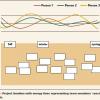|
|
Team Size and Its Effect on Peer Reviews This article discusses the prerequisites to quantitative management. How to create effective teams by determining recommended team size for inspections is also discussed.
|
Mark Paulk, Carnegie Mellon University
|
|
|
SM/ASM 2003: The Power of Retrospectives This paper discusses and explains the differences between post project reviews and retrospectives. Three retrospective case studies are also detailed.
|
Esther Derby, Esther Derby Associates Inc
|
|
|
Bulletproof your Review Program! In this article, the author explains how to bulletproof your review program by avoiding traps that typically kill technical review programs. She also details four common reasons why review programs fail and what you can do to successfully implement one for your team.
|
Esther Derby, Esther Derby Associates Inc
|
|
|
Introduce and Sustain a Worldwide Software Inspection Process In this presentation you will discover how to: understand the benefits that come with implementing inspections, understand the steps to rollout an effective inspection process, how to anticipate the problems that can be
encountered during an inspection rollout, and learn the importance of monitoring to maintain effective inspections. This paper also details system inspection definitions.
|
Marc Rene, GTECH Corporation
|
 |
Wall-to-Wall Tools Got blank walls? Instead of hiring a decorator, perhaps you should enlist the help of a facilitator. This article examines how three experts use the wall in very different ways to make retrospectives, design, and collaboration better and easier.
|
|
|
|
Traps That Can Kill a Review Program (And How to Avoid Them) Technical reviews have been around for a long time, and they're generally recognized as a "good thing" for building quality software and reducing the cost of rework. Yet many software companies start to do reviews only to have the review program falter. So the question remains: How can you succeed with a review program? Management support and good training for review leaders is a good place to start. But it's the details of implementation that truly determine whether reviews will stick, or they'll fall by the wayside. Esther Derby offers her insights based on observations from both successful and failed review programs.
|
Esther Derby, Esther Derby Associates Inc
|
|
|
Karl Wiegers on Software Inspections and Peer Reviews Peer reviews and inspections are among the highest-leverage software quality practices available. Here are some useful sources of guidance on how to perform software inspections and peer reviews, as well as some tools and online resources that can help you jump-start your fledgling review program.
|
|
|
|
STAREAST 2000: How Testers Can Contribute to Reviews Brian Lawrence begins his presentation with a brief overview of what a review is and how it works in software organizations. Although testers may or may not understand source code, they can still contribute considerable value in reviews. Learn how to devise tests as a review preparation technique that can identify potential defects and serve as a basis for test planning and design.
|
Brian Lawrence, Coyote Valley Software
|
|
|
A Blueprint for Success: Implementing an Architectural Review Process The most costly product defects are often a problem of software architecture. Testing your architecture is a crucial, but often overlooked, step in product development. Learn how to create apply a Systems Architecture Review Board for your own architectural review process.
|
|
|
|
Retrospectives: They're Not Just For Developers Anymore Traditional methods for improving testing include training, hiring, adding new processes, building infrastructure, and buying new tools. But what about increasing the capability of the team? Author Aldous Huxley said, "Experience is not what happens to a man; it is what a man does with what happens to him." The same is true for software teams: It's what we do with our experience that matters. Too often, we don't do much-if anything-to squeeze learning out of our experience. Retrospectives are a way to take the "what happened" during a software project and use it to build understanding. Testing borrows a page from adult learning theory and project reviews to increase team capability through Testing Retrospectives, and determines how to do more of what worked and less of what didn't.
|
Esther Derby, Esther Derby Associates Inc
|

